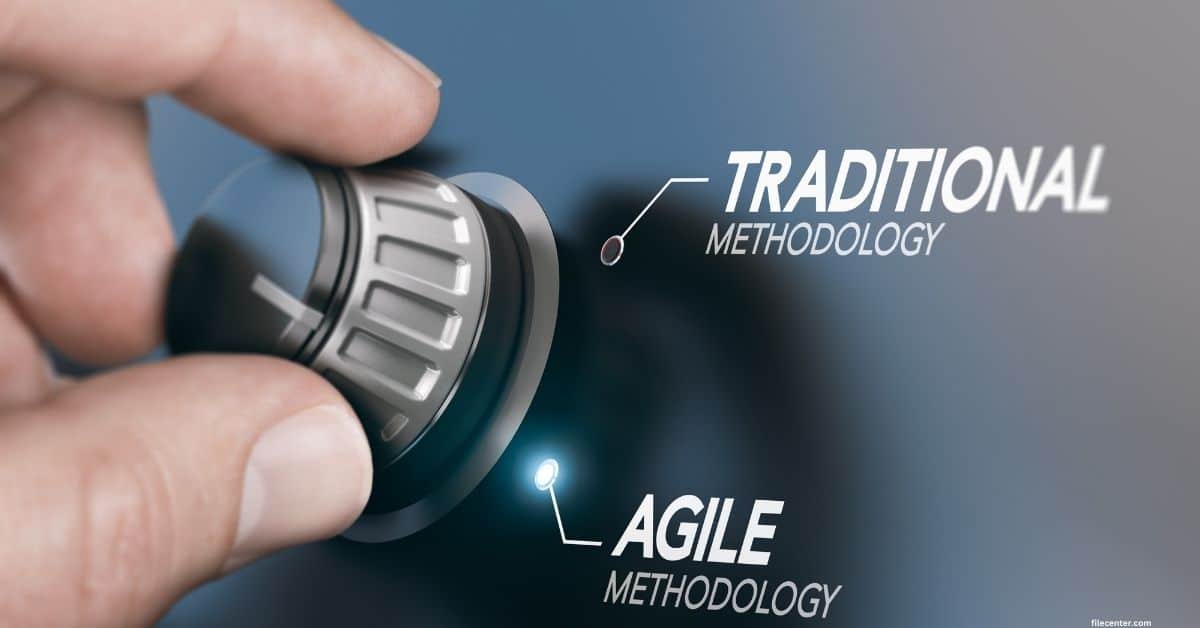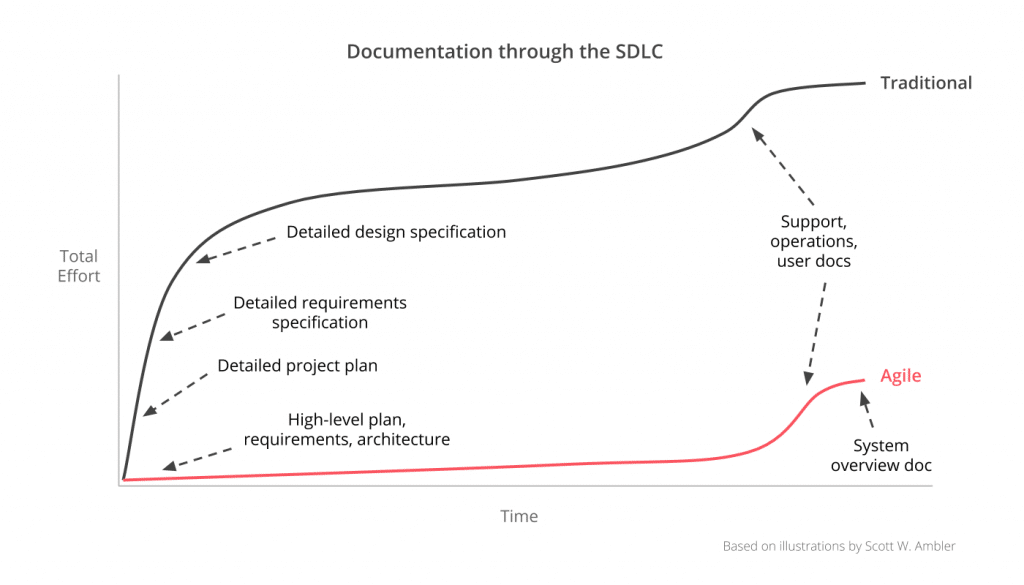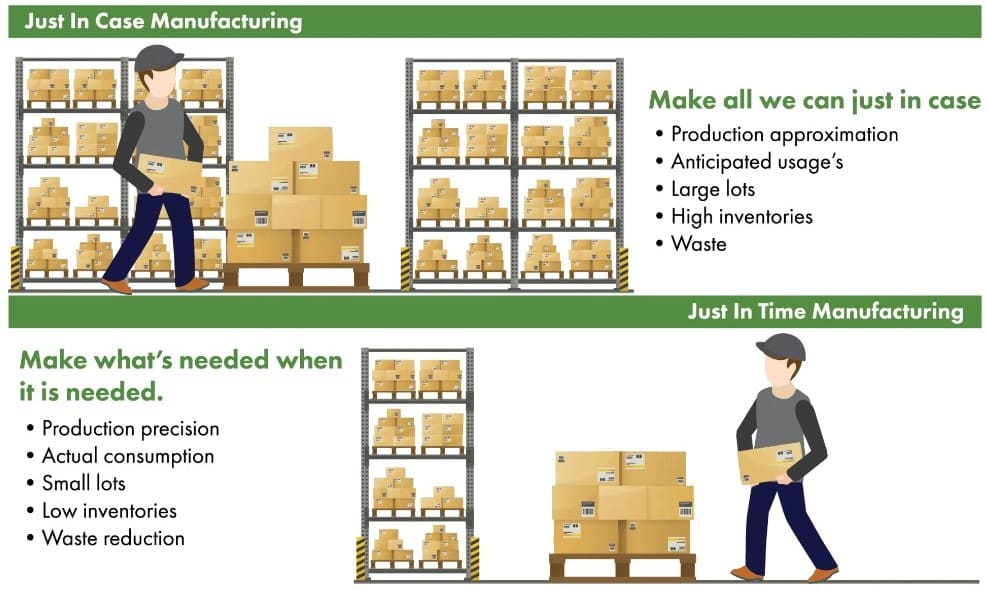Agile Document Management: The Way Forward in 2022

In the mountains, anything can happen.
From bear attacks to floods to snake bites, there are innumerable dangers on the trail, yet 45 million backpackers brave the wilderness each year.
Despite the near-endless list of needs that could arise on the trail, you would be hard-pressed to find a backpacker who opts to carry everything they could possibly need. There’s a reason that minimalism beats maximalism when it comes to hiking: packing for a backpacking trip is walking a razor’s edge between bringing everything a hiker could ever need yet carrying as little as possible.
This delicate balance between hoarding resources and efficient management bleeds into every aspect of modern life, whether it’s backpacking, home decorating, or document management. Agile document management is the pursuit of that perfect balance: everything a user may need without the deadweight that stops a project in its tracks.
Whether you’re heading up a mountain or a marketing campaign, identifying the right things to bring with you and the right things to leave behind is an essential discipline for all aspects of life. That’s why FileCenter’s agile document management tools are the definitive resource for finding the way forward in the modern world.
Key Takeaways:
- Agile document management is an approach to minimizing unnecessary documentation.
- JIT documentation is modeled after JIT manufacturing for many of the same benefits.
- FileCenter’s document management tools can help you achieve agility.
What Is Agile Document Management?
To get the full picture of agile document management, you must first be familiar with its alternatives.
In the document management world, businesspeople use many adjectives to distinguish different techniques and strategies. In previous generations, “document manager” was a job title, not a system. It used to take a full-time job (or multiple full-time jobs) to keep an organization’s documentation in order: properly sorted and filed, safely stored, securely accessible, appropriately maintained, etc.
In today’s technology-enabled landscape, “document manager” more frequently refers to document management software or DMS. DMS takes the most tedious and precarious parts of document management and uses technology to accomplish the same tasks in a fraction of the time. For example, document management software may procedurally sort files based on their content, concatenate batch scans into single documents, secure documents on the cloud so you and your team can access from multiple locations and many more tasks that would range from difficult to impossible with human labor alone.
Traditional document management software uses the maximalist approach: all the information, all the time.
By contrast, agile document management arose from the need for decision-makers to access relevant information without being weighed down by irrelevant clutter.
This process of documenting all the relevant information and none of the irrelevant details is visualized below, using SDLC (Systems Development Life Cycle) as an example of a project that could require documentation.

How to Prioritize Information
For agile document management to make sense, the system must know what information is relevant and what kind of information is superfluous. To keep data management sleek but comprehensive, there are certain types of information that you should prioritize.
1. Project Specifications
Agile document management is different from the traditional system in many ways, one of which is how project specifications are handled. In the traditional system, the specifications of a project would be one of the first items to be established, but in reality, the needs of a project frequently evolve and change over time.
Because the specifications can progress over time, the agile documentation approach means project specification documents are created closer to the end of a project, once all the relevant details have been iterated on.
2. Project Overview and Vision
Not even the best backpackers can complete a successful hike without knowing their destination and carrying a map. While excessive documentation can slow down a project, knowing a project’s overall goal and direction is essential for making progress.
While agile documentation users need to hold a loose concept of the specifications of a project, the entire team must understand the overall vision and direction of a project. While this overview may change as the project progresses, it’s important that the non-negotiables be documented and accessible.
3. User Decisions
Communication is essential to any high-functioning team. To avoid redundant or irrelevant work, the people on your team must be kept up-to-date with what other users are working on. Data-users should have access to the current decisions of their entire team, so relevant decisions and progress should be prioritized in agile document management.
This approach to documentation isn’t limited to specific industries or departments—whether you’re developing software, preparing marketing campaigns, or restructuring a company, the disciplines of identifying essential documentation and avoiding redundant information are universally valuable.
Just-in-Time or Just-in-Case?
The two approaches to documentation can be summarized as Just-in-Time (JIT) documentation or Just-in-Case (JIC) documentation.
JIC documentation is the philosophy of traditional document management. The more documentation, the better. If you can anticipate a customer’s questions, rule out every edge case, and cover every nuance of a project, the more, the merrier.
The strength of JIC documentation lies in its thoroughness. JIC documentation is more comprehensive and rigorous than its JIT counterpart. The weakness of JIC is that looking for a specific answer can be like searching for a marble in a gravel bar. JIC documentation leads to unwieldy, unfriendly masses of documentation. It also drives up storage costs, makes data analysis more time-consuming, and wastes time and resources spent preparing documents that no one may ever use.
By contrast, the JIT approach to documentation is modeled after the JIT approach to manufacturing, where just-in-time manufacturers produce products as customers order them, rather than manufacturing products ahead of time and warehousing their inventory, hoping customers will place an order in the future.
JIT documentation is valuable for many of the same reasons as JIT manufacturing: reduced storage costs, less wasted resources sunk into projects that aren’t profitable, and greater flexibility in production.
In the documentation world, just-in-time documentation—the philosophy behind agile document management—means that documents are created when the need for them arises.
Rather than trying to anticipate every question a user may have, JIT documentation waits to see what kinds of questions users are actually asking. Not only is this valuable because of the savings on time and resources, but it’s also more useful to the users of that documentation because their actual emergent concerns are more likely to be addressed by JIT documentation than by a traditional system.

FileCenter and Agile Documentation
As experts in document management, FileCenter facilitates agile documentation by giving its users the tools to source, organize, edit, and analyze their documentation.
FileCenter contains several advanced features like Optical Character Recognition, batch processing, receipt scanning, content-based sorting, cloud integration, and more. As you embark on your next documentation journey, remember that the right balance of packing light and getting the highest value out of your resources is the key to reaching your destination.
Schedule a demo or download a free trial today to see how FileCenter’s powerful document management software can help you maximize the value of your data.


